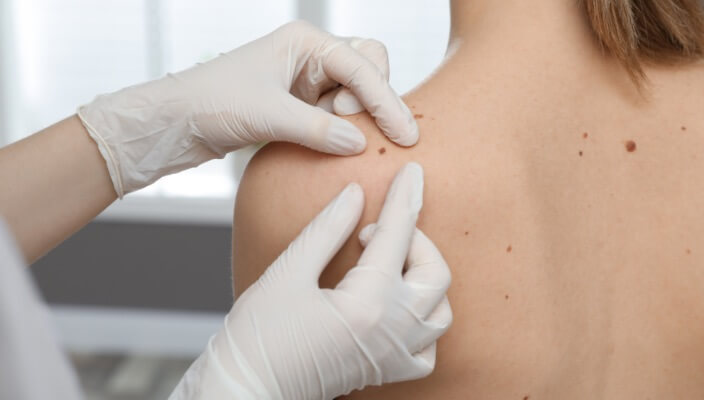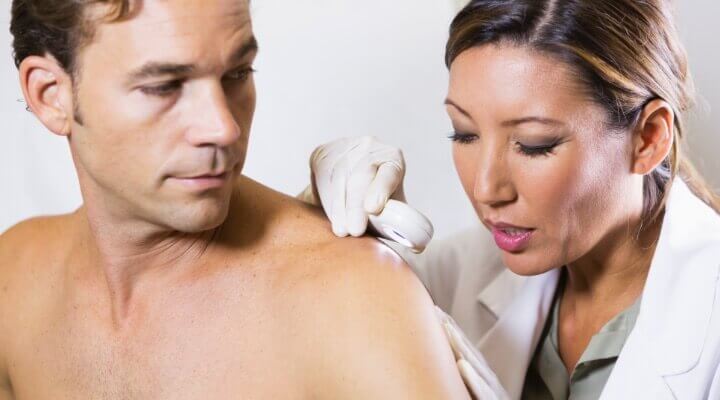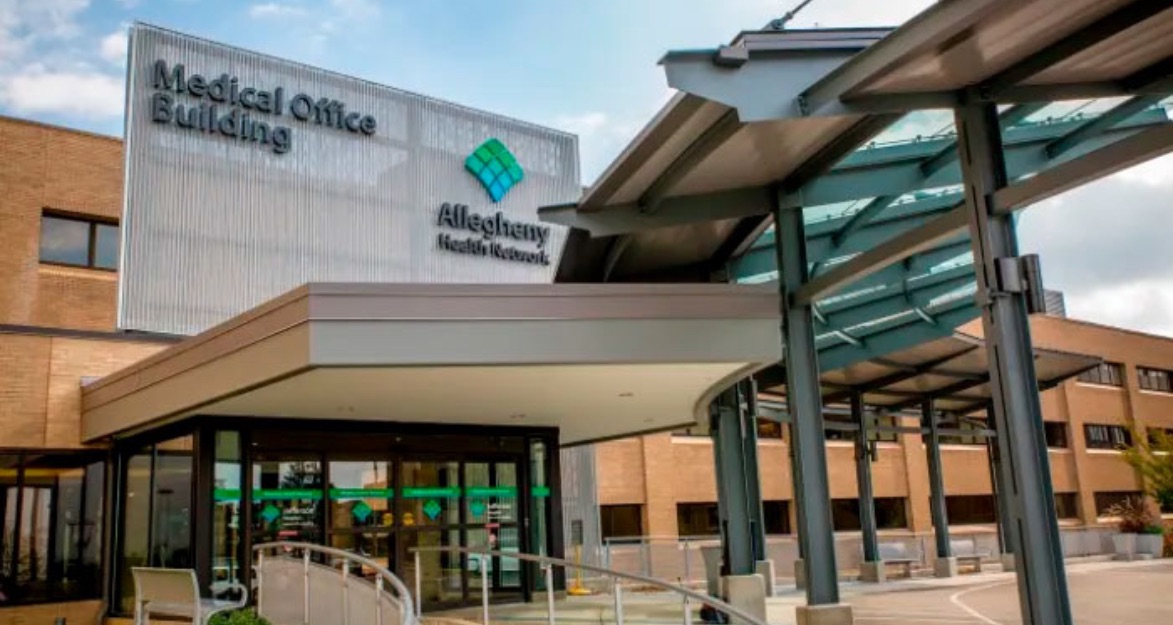A Comprehensive Guide to Total Body Skin Exams
Understanding Skin Checks
 Maintaining the health of your skin is crucial, and one key aspect of preventive care is the Total Body Skin Exam (TBSE). This comprehensive guide will walk you through what to expect during a TBSE and emphasize its importance in early detection and prevention.
Maintaining the health of your skin is crucial, and one key aspect of preventive care is the Total Body Skin Exam (TBSE). This comprehensive guide will walk you through what to expect during a TBSE and emphasize its importance in early detection and prevention.Total Body Skin Exams involve a thorough examination of the skin, scalp, nails, and mucous membranes by a dermatology provider. These exams play a crucial role in the early detection of skin cancers, including melanoma, the deadliest form of skin cancer. During a TBSE, your dermatology provider will examine moles, lesions, and any other skin abnormalities.
During a Total Body Skin Exam (TBSE), you can anticipate a thorough examination conducted by your dermatology provider. The process involves a comprehensive visual inspection of your skin, encompassing all areas from head to toe. The dermatologist will meticulously assess moles, freckles, and any unusual spots, paying close attention to details like size, color, shape, and texture.
Special emphasis will be placed on high-risk areas, including the face, neck, ears, hands, and feet. These regions, being more susceptible to sun exposure, are carefully examined for any signs of skin damage or abnormalities. The dermatology provider aims to identify potential issues in these areas, given their increased vulnerability.
As part of the examination, dermoscopy, a non-invasive tool, may be employed. This technique allows for the magnification of the skin's surface, enabling a closer inspection. Dermoscopy is particularly beneficial in identifying subtle changes that may not be readily visible to the naked eye. Through this advanced tool, dermatologists can enhance their ability to detect any irregularities or abnormalities in the skin, contributing to a more comprehensive assessment during the TBSE.
Why Are Total Body Skin Exams Important?
Total Body Skin Exams (TBSEs) are crucial for the early detection of skin cancer. These examinations allow your dermatology provider to thoroughly assess the entire skin surface, identifying suspicious moles, lesions, or abnormalities that may indicate the presence of skin cancers like melanoma. Early detection is key to successful treatment and improved outcomes for individuals at risk of or with a history of skin cancer.
From Our QualDerm Family of Providers: Total Body Skin Exams Explained
Early Detection of Skin Cancer
Monitoring Changes Over Time
Personalized Risk Assessment
Time to Schedule Your Total Body Skin Exam
Take a proactive approach to your skin health by scheduling a Total Body Skin Exam today—don't wait for noticeable changes. Early detection is crucial when it comes to skin cancer. We encourage you to schedule regular Total Body Skin Exams with a dermatology provider and perform regular at-home skin self-exams. Prioritize your skin health with regular skin exams, adopting sun-safe habits, and wearing sunscreen. Remember, your skin reflects your overall health, making routine Total Body Skin Exams essential for its well-being.
Featured Products for Sun Safety

EltaMD UV Clear SPF 46
Oil-free EltaMD UV Clear helps calm and protect sensitive skin types prone to discoloration and breakouts associated to acne and rosacea. It contains niacinamide (vitamin B3), hyaluronic acid and lactic acid, ingredients that promote the appearance of healthy-looking skin. Very lightweight and silky, it may be worn with makeup or alone. Choose from tinted and untinted formulas for use every day. 1.7 oz / 48 g

EltaMD UV Sheer Broad-Spectrum SPF 50
UV Sheer has a lightweight, hydrating formula that feels silky to the touch and light and airy on the skin. It goes on smooth absorbing quickly into skin and helps even out skin tone.



